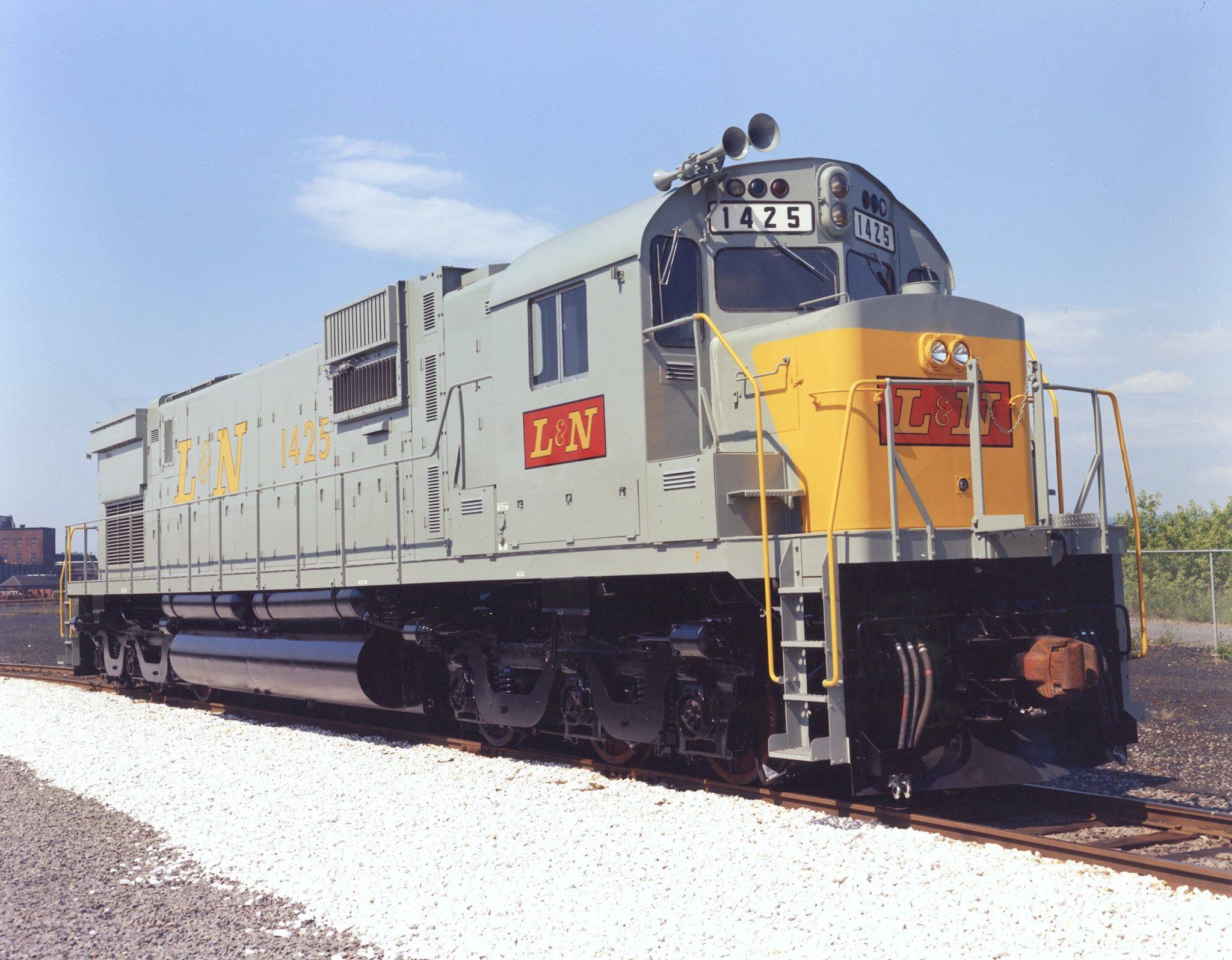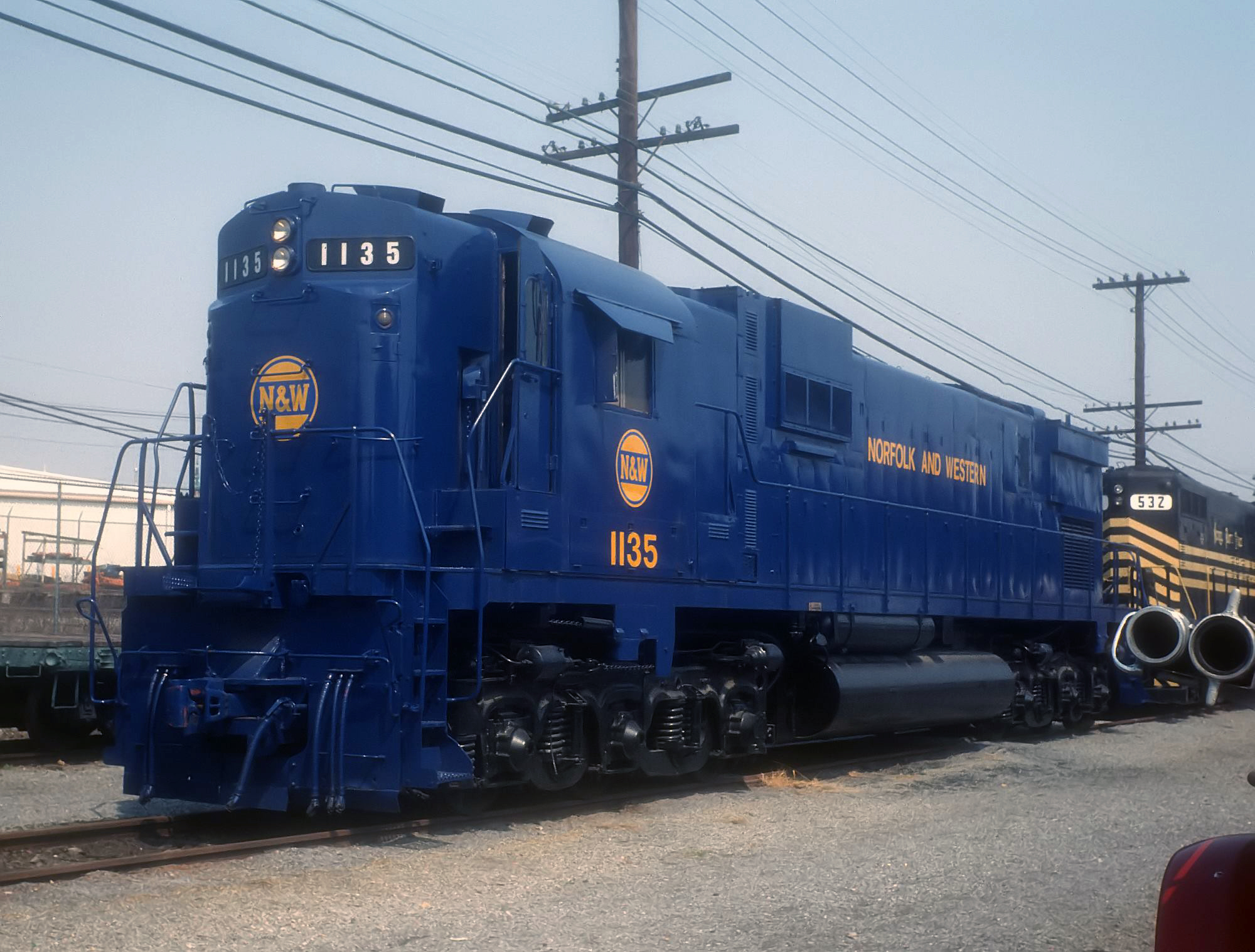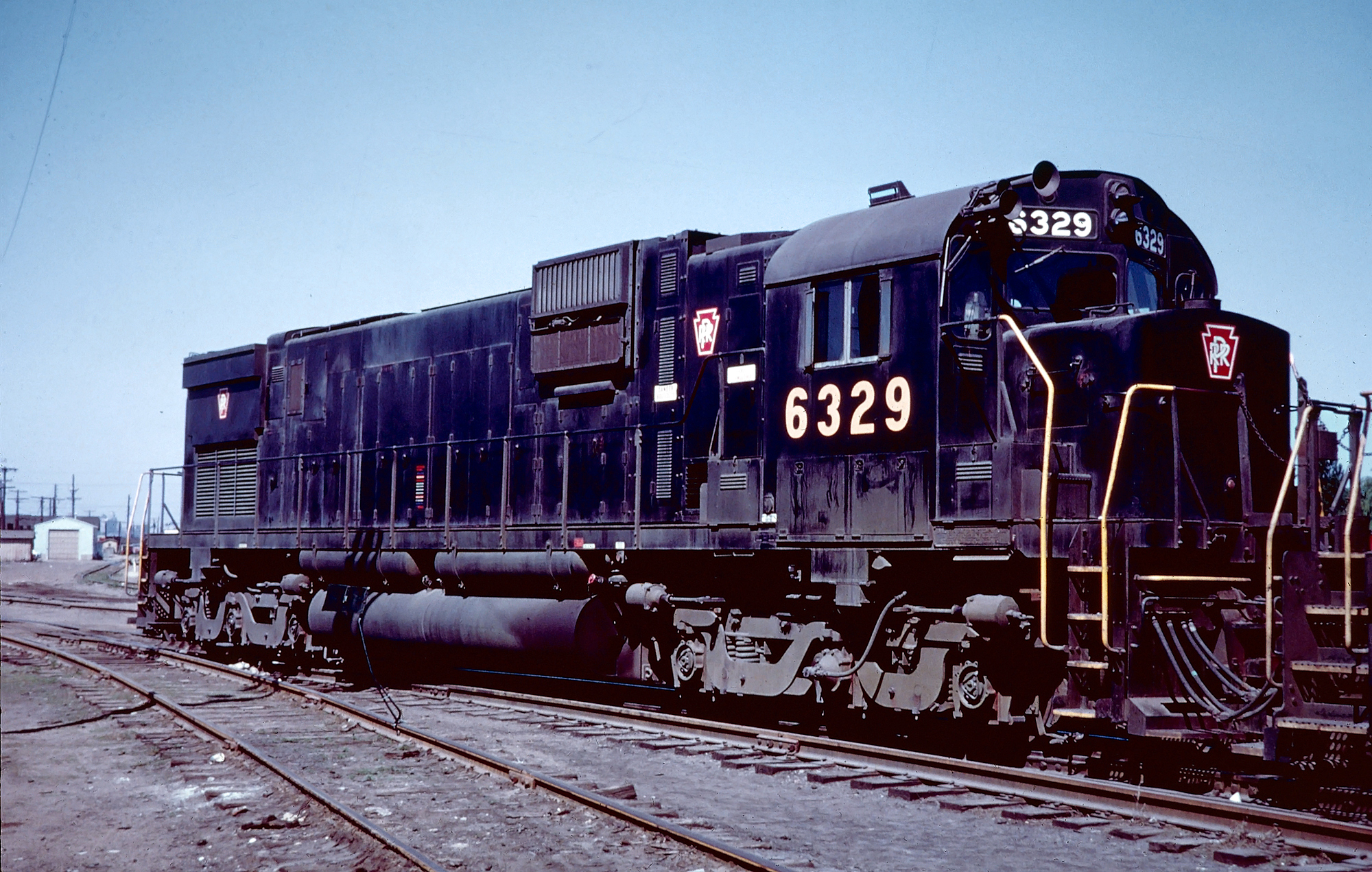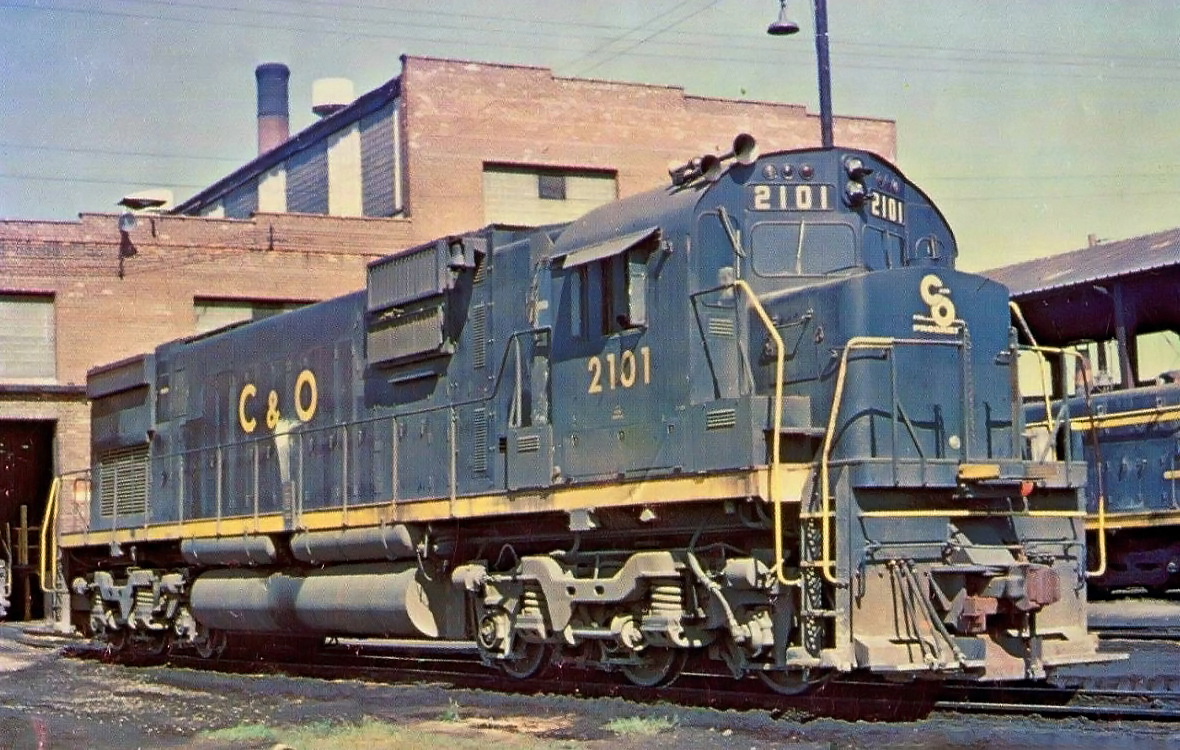Alco "C630" Locomotives: Specs, Roster, Data Sheet
Last revised: December 23, 2024
By: Adam Burns
Alco’s C630, introduced in 1965, was the 3,000-horsepower flagship of the company’s Century series of diesel-electric freight locomotives.
A six-axle C-C design powered by the 16-cylinder 251C prime mover, it targeted heavy-haul mainline service and competed directly with EMD’s SD40 and GE’s U30C. The C630 emphasized high tractive effort and adhesion for coal, ore, and manifest trains, and appeared with standard Trimount trucks; later variants used high-adhesion designs.
Built in 1965–1967 at Schenectady, the model sold in modest numbers to several U.S. railroads; a closely related version, the M630, was produced by Montreal Locomotive Works for Canadian carriers into the early 1970s.
Despite strong performance, Alco's eroding market share, parts support concerns, and tough competition limited further orders. The builder exited locomotive production in 1969, but many C630s and M630s worked into the 1980s, in rugged territory. The model remains a potent symbol of Alco's engineering ambitions and the Century line.
Photos
 An American Locomotive builder's photo featuring new Louisville & Nashville C630 #1425 at the plant in Schenectady, New York in June, 1966. Warren Calloway collection.
An American Locomotive builder's photo featuring new Louisville & Nashville C630 #1425 at the plant in Schenectady, New York in June, 1966. Warren Calloway collection.Overview
The C630 began production in 1965 which was a more powerful version of the earlier C628 that had been in the company's catalog since 1963. The new model could produce a respectable 3,000 horsepower using Alco's 251E prime mover.
By this point, most of Alco's orders came from loyal customers as it became almost impossible for the manufacturer to either gain or earn back new customers with its troubled early prime movers.
Buyers of the C630 included:
- Union Pacific
- Southern Pacific
- Pennsylvania
- Reading
- Norfolk & Western
- Atlantic Coast Line
- Louisville & Nashville
- Chesapeake & Ohio.
Additionally, Canadian Pacific, Canadian National, and the Pacific Great Eastern purchased examples of the M630 and C630M. By the time production had ended in 1969 133 C630s, C630Ms, and M630s had been built.
 Norfolk & Western C630 #1135 preserved at the Virginia Museum of Transportation in Roanoke; April, 1992. Rick Burn photo.
Norfolk & Western C630 #1135 preserved at the Virginia Museum of Transportation in Roanoke; April, 1992. Rick Burn photo.The C630, and the Century line in general, offered the most tractive effort of any locomotive in its class, even eclipsing the Electro-Motive Division and General Electric.
As such, railroads showed real interest in the designs as many began to understand the value of six-axle setups and the traction they provided.
For instance, the C630 could produce 85,850 pounds of starting effort and 79,500 continuous making them ideal for heavy drag service hauling freight such as coal and ore.
Through the end Alco continued to rely on General Electric to supply it with internal components for its locomotives despite the fact that GE was now a competitor.
 A former Pennsylvania C630, #6329, is seen here in Syracuse, New York during the early Penn Central era in September, 1969. Fred Byerly photo. American-Rails.com collection.
A former Pennsylvania C630, #6329, is seen here in Syracuse, New York during the early Penn Central era in September, 1969. Fred Byerly photo. American-Rails.com collection.At first railroads liked the six-axle Centuries very much considering Alco no longer had significant reliability problems that plagued its early designs. However, the longer railroads operated them the more they noticed the significant wear the units produced on the track structure.
Data Sheet and Specifications
| Entered Production | 7/28/1965 (Atlantic Coast Line #2011) |
| Years Produced | 7/28/1965-10/27/1967 |
| Model Specification | DL630 |
| Engine | 251E, V-16 |
| Horsepower | 3,000 |
| RPM | 1,100 |
| Carbody Styling | Alco |
| Length (Between Coupler Pulling Faces) | 69' 6" |
| Weight | 394,000 Lbs. (Optional ballasting available up to 420,000 Lbs.) |
| Dynamic Brakes | Optional |
| Trucks | C-C |
| Truck Type | Hi-Ad (High Adhesion) |
| Truck Wheelbase | 12' 6" |
| Wheel Size | 40" |
| Traction Motors | GE 752 (6) |
| Traction Generator (AC) | GTA9 |
| Gear Ratio | 74:18 |
| Tractive Effort Rating | 79,500 Lbs. at 12 MPH |
| Top Speed | 70 MPH |
Production Rosters
C630
Total Built = 77
| Owner | Road Number(s) | Construction Number(s) | Completion Date |
|---|---|---|---|
| Atlantic Coast Line | 2011-2013 | S-3480-1 thru S-3480-3 | 7/1965-12/1965 |
| Chesapeake & Ohio | 2100-2103 | S-3486-01 thru S-3486-04 | 10/1967 |
| Louisville & Nashville | 1425-1432 | S-3486-01 thru S-3486-08 | 6/1966-7/1966 |
| Norfolk & Western | 1130-1134 | S-3456-01 thru S-3456-05 | 5/1966 |
| Norfolk & Western | 1135-1139 | S-3480-01 thru S-3480-05 | 9/1967 |
| Pennsylvania | 6315-6329 | S-3466-01 thru S-3466-15 | 10/1966-12/1966 |
| Reading | 5300-5306 | S-3442-01 thru S-3442-07 | 6/1966 |
| Reading | 5307-5311 | S-3487-01 thru S-3487-05 | 9/1967-10/1967 |
| Southern Pacific | 7800-7814 | S-3439-01 thru S-3439-15 | 3/1966-4/1966 |
| Union Pacific | 2900-2909 | S-3440-01 thru S-3440-10 | 5/1966-10/1966 |
C630M
Total Built = 56
| Owner | Road Number(s) | Construction Number(s) | Completion Date |
|---|---|---|---|
| Canadian National | 2000-2001 | M-3479-01 thru M-3479-02 | 8/1967 |
| Canadian National | 2002-2043 | M-3491-01 thru M-3491-42 | 12/1967-6/1968 |
| Canadian Pacific | 4500-4507 | M-6002-01 thru M-6002-08 | 7/1968-9/1968 |
| Pacific Great Eastern | 701-704 | M-6029-01 thru M-6029-04 | 7/1969 |
The C630M was built at the Montreal Locomotive Works (MLW) with the "M" designated "Canadianization" for locomotive requirements in that country. When Schenectady ended operations on December 31, 1968, production of this model continued at MLW but were re-designated as the M630.
M630
Total Built = 29
| Owner | Road Number(s) | Construction Number(s) | Completion Date |
|---|---|---|---|
| Canadian Pacific | 4550-4553 | 6030-01 thru 6030-04 | 9/1969-10/1969 |
| Canadian Pacific | 4570-4575 | 6030-05 thru 6030-10 | 10/1969-11/1969 |
| Canadian Pacific | 4508 | 6030-11 | 11/1969 |
| Canadian Pacific | 4509-4516 | 6030-12 thru 6030-19 | 12/1969-1/1970 |
| Canadian Pacific | 4554-4555 | 6030-20 thru 6030-21 | 2/1970 |
| Canadian Pacific | 4556-4557 | 6036-01 thru 6036-02 | 2/1970 |
| Canadian Pacific | 4576-4581 | 6036-03 thru 6036-08 | 2/1970-3/1970 |
Sources
- Foster, Gerald. A Field Guide To Trains. New York: Houghton Mifflin, 1996.
- Kirkland, John F. Diesel Builders, The: Volume Two, American Locomotive Company And Montreal Locomotive Works. Glendale: Interurban Press, 1989.
- Pinkepank, Jerry A. Diesel Spotter's Guide. Milwaukee: Kalmbach Publishing Company, 1967.
- Solomon, Brian. Alco Locomotives. Minneapolis: Voyageur Press, 2009.
 Chesapeake & Ohio C630 #2101 at Wyoming Yard in Grand Rapids, Michigan during July of 1974. The C&O purchased a small batch of four of these big beasts, #2100-2103 in 1967. Plagued with reliability issues they were never liked by the railroad.
Chesapeake & Ohio C630 #2101 at Wyoming Yard in Grand Rapids, Michigan during July of 1974. The C&O purchased a small batch of four of these big beasts, #2100-2103 in 1967. Plagued with reliability issues they were never liked by the railroad.In any event, while most companies that purchased the C630 operated main lines that could handle the weight they still found the wear on their infrastructure far too excessive.
As such, nearly all of the C630s were retired by the 1980s. Interestingly, the M630s and M630Ws purchased by both Canadian National, Canadian Pacific, and Pacific Great Eastern (later British Columbia Railway) were well liked and most remained in regular freight service through the early 1990s.
Recent Articles
-
Georgia Christmas Train Rides In Duluth!
Dec 01, 25 11:09 PM
The Southeastern Railway Museum’s holiday season really kicks off with its annual “Santa Arrives by Train!!” event, when Mr. and Mrs. Claus literally roll into the museum by rail. -
Delaware Christmas Train Rides In Wilmington!
Dec 01, 25 11:01 PM
Today, the Wilmington & Western is known not only for its vintage steam and diesel locomotives, but also for its exceptional roster of themed excursions—especially its magical holiday trains. -
Florida Christmas Train Rides In Clewiston!
Dec 01, 25 12:08 PM
Based in Clewiston, Sugar Express has rapidly become known for its beautifully restored steam locomotive, its carefully curated excursions across rare mileage, and its incredibly popular seasonal even…



